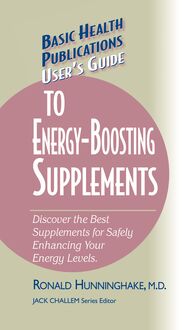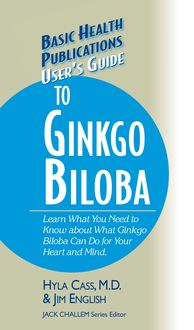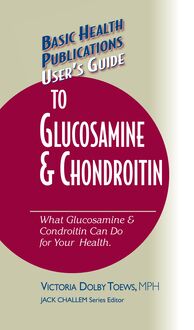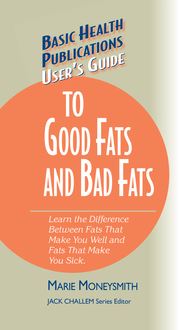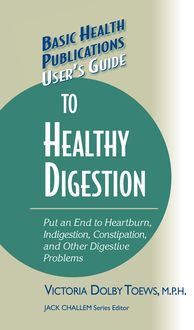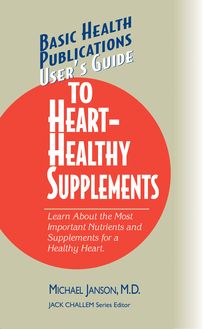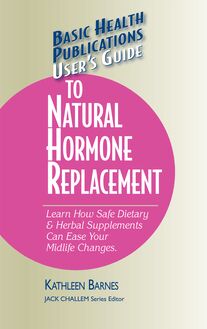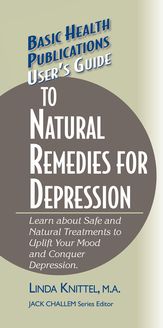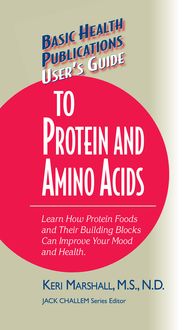-
 Univers
Univers
-
 Ebooks
Ebooks
-
 Livres audio
Livres audio
-
 Presse
Presse
-
 Podcasts
Podcasts
-
 BD
BD
-
 Documents
Documents
-
- Cours
- Révisions
- Ressources pédagogiques
- Sciences de l’éducation
- Manuels scolaires
- Langues
- Travaux de classe
- Annales de BEP
- Etudes supérieures
- Maternelle et primaire
- Fiches de lecture
- Orientation scolaire
- Méthodologie
- Corrigés de devoir
- Annales d’examens et concours
- Annales du bac
- Annales du brevet
- Rapports de stage
La lecture à portée de main
Vous pourrez modifier la taille du texte de cet ouvrage
Découvre YouScribe en t'inscrivant gratuitement
Je m'inscrisUser's Guide to Policosanol & Other Natural Ways to Lower Cholesterol , livre ebook
Découvre YouScribe en t'inscrivant gratuitement
Je m'inscrisEn savoir plus
Vous pourrez modifier la taille du texte de cet ouvrage
En savoir plus

Description
Sujets
Informations
| Publié par | Turner Publishing Company |
| Date de parution | 01 mars 2003 |
| Nombre de lectures | 0 |
| EAN13 | 9781591206538 |
| Langue | English |
| Poids de l'ouvrage | 1 Mo |
Informations légales : prix de location à la page 0,0298€. Cette information est donnée uniquement à titre indicatif conformément à la législation en vigueur.
Extrait
The information contained in this book is based upon the research and personal and professional experiences of the author. It is not intended as a substitute for consulting with your physician or other healthcare provider. Any attempt to diagnose and treat an illness should be done under the direction of a healthcare professional.
The publisher does not advocate the use of any particular healthcare protocol but believes the information in this book should be available to the public. The publisher and author are not responsible for any adverse effects or consequences resulting from the use of the suggestions, preparations, or procedures discussed in this book. Should the reader have any questions concerning the appropriateness of any procedures or preparations mentioned, the author and the publisher strongly suggest consulting a professional healthcare advisor.
Series Editor: Jack Challem
Editor: Stephany Evans
Typesetter: Gary A. Rosenberg
Series Cover Designer: Mike Stromberg
Basic Health Publications, Inc.
8200 Boulevard East
North Bergen, NJ 07047
1–800–575–8890
Copyright © 2003 by Mark Stengler, N.D.
ISBN 13: 978-1-59120-653-8
ISBN: 1-59120-051-2
All rights reserved. No part of this publication may be reproduced, stored in a retrieval system, or transmitted, in any form or by any means, electronic, mechanical, photocopying, recording, or otherwise, without the prior written consent of the copyright owner.
Printed in the United States of America
10 9 8 7 6 5 4 3 2 1
C ONTENTS
Introduction
1. Understanding Heart Disease
2. The Policosanol Answer
3. The Science Behind Policosanol
4. Preventing and Treating Heart Disease
5. Heart-Healthy Nutrients
6. Heart-Healthy Herbal Remedies
7. New Risk Markers for Heart Disease and Their Natural Solutions
Conclusion
Selected References
Other Books and Resources
I NTRODUCTION
H eart disease. We all know someone who either lives with it or who has died from it. Perhaps you have been told that you have heart disease, often referred to as cardiovascular disease (a term that recognizes the involvement of the entire heart and circulatory system).
More than 960,000 Americans succumb to cardiovascular disease each year. This staggering statistic accounts for approximately 41 percent of all deaths in the United States.
While cholesterol-lowering drugs and surgery are the favored therapy by conventional doctors, these alone are no longer considered the best medicine.
Tens of thousands of American health professionals are increasingly recommending dietary and lifestyle changes, which have been proven to make a dramatic impact on one’s cardiovascular health, as well as nutritional supplements to prevent and reverse heart disease.
Does this natural approach work? You bet. And the risk of side effects is virtually nonexistent when compared with pharmaceutical and surgical options.
High cholesterol levels have long been vilified as the cause of most cases of heart disease. It’s true that elevated levels can increase a person’s risk of heart disease. Yet the potential toxicity of many cholesterol-lowering drugs have encouraged many to seek a better way to “normalize” cholesterol levels.
Specific nutritional supplements have been discovered that can work as well as highly publicized cholesterol drugs. Although your doctor may not recommend these natural cholesterol-lowering nutrients, many have substantial scientific studies to back up their effectiveness and safety.
One such natural supplement that effectively normalizes cholesterol levels and other markers for heart disease is Policosanol. And it works without the potentially fatal side effects you see with some cholesterol medications.
Because so much has been made of the issue, it may be surprising to learn that elevated cholesterol levels are only one small piece of the puzzle of why people develop heart disease. For example, in medical circles, it is a well-known fact that 50 percent of those who have heart attacks have normal cholesterol levels!
The User’s Guide to Policosanol and Other Natural Ways to Lower Cholesterol was written to help people understand and effectively combat the causes of heart disease.
In Chapter 1, you will learn the mechanisms of how heart disease develops. I will also discuss the many risk factors associated with cardiovascular disease and what we can do to prevent them.
Chapter 2 focuses on the breakthrough supplement Policosanol. You will learn about the many ways it helps prevent and reverse heart disease. Included in Chapter 3 are numerous human studies that demonstrate its mechanism of action, effectiveness and safety, and how to use it.
Chapter 4 addresses the importance of dietary and lifestyle approaches in preventing and reversing heart disease.
The final chapters provide important recommendations on a variety of heart-healthy supplements to meet your individual health needs.
I hope you will be as enthusiastic as I am about the information in this book: it can improve the quality and length of your life. Enjoy.
CHAPTER 1
U NDERSTANDING H EART D ISEASE
T he heart, without a doubt, is one of the most incredible organs in the human body. This fist-sized organ pumps enough blood through the blood vessels to nourish and sustain all the trillions of cells in your body. Some experts believe that, under ideal circumstances, the heart can maintain its incredible pace for up to 120 years!
Providing proper nutrients is the key to a healthy heart and circulatory system, enabling them to work efficiently. In addition, one should avoid harmful lifestyle choices such as eating unhealthy fast food and smoking, which put undue stress on the heart.
However, there are also independent genetic risk factors that research has shown to greatly increase the odds of a cardiovascular disease. These genetic factors can be fatal even if one is following a healthy diet and lifestyle.
What Is Heart Disease?
“Heart disease” simply refers to a disorder of the heart. Many people use this as a general term to refer to the entire heart and circulatory system. A better term to cover the entire system of the heart and blood vessels is “cardiovascular disease.”
Concomitant with cardiovascular disease is what is commonly called “hardening of the arteries,” that is, arteriosclerosis. In this condition, artery walls thicken and lose their flexibility, interfering with circulation. The most common type of arteriosclerosis is known as atherosclerosis. This is an accumulation of fatty deposits along blood vessel walls, resulting in a thickening and hardening of the medium to large artery walls.
Forms of Cardiovascular Disease
Many different conditions fall under the category of cardiovascular disease. These conditions are discussed below.
Myocardial Infarction
This is the medical term for a heart attack. This occurs when too little oxygenated blood reaches the heart, resulting in the death of heart tissue. Arteries that have become clogged with fatty deposits or a blood clot that has lodged in the heart may cause a heart attack.
Characteristic symptoms include a squeezing or sharp pain in the chest or upper abdomen. The pain may radiate down the left or right arm and into the neck, back, or shoulders. Shortness of breath, faintness, nausea, and excessive perspiration are also common symptoms. It’s possible to have a heart attack and mistake it for indigestion, as the symptoms can be very similar.
Hypertension
One of the biggest risk factors for heart disease is hypertension, also known as high blood pressure. This refers to the pressure inside the artery walls. A normal reading is 120/80 mm/Hg. Systolic blood pressure (the first number) that is 140 and higher, and diastolic readings (the second number) of 90 or more are considered to be elevated. If on three separate occasions you have an elevated reading, your doctor will confirm a diagnosis of hypertension.
Stroke
This refers to brain damage caused by a lack of blood flow to a part of the brain. When blood flow is cut off to the brain, it prevents oxygen and nutrients from getting to brain tissue, which can lead to the death of brain cells.
Stroke is the third leading cause of death and a leading cause of serious, long-term disability in the United States. According to the American Heart Association, about 600,000 Americans suffer a stroke each year. Approximately 25 percent of these strokes are fatal.
Arrhythmia
Abnormal rhythm of the heart is known as an arrhythmia. There are many different types of arrhythmias with varying degrees of severity.
Symptoms may include heart palpitations, dizziness, or fainting. In more extreme cases, arrhythmia can result in death.
Valvular Disease
Valves of the heart help control blood flow. When they do not open or close properly, it can negatively affect blood flow. The severity of valve disease can widely vary.
Shortness of breath, heart palpitations, and chest pain can be symptoms of valvular disease. Most cases are not life threatening.
Murmur
Not actually a disease in itself, a “murmur” refers to the sound a doctor can hear when heart valves do not shut properly or when there is restricted blood flow through the heart. The seriousness of murmurs varies greatly.
Congestive Heart Failure
When the heart begins to fail as a pump, it is known as congestive heart failure. Years of high blood pressure or arteriosclerosis can lead to an inefficient pumping action of the heart. Symptoms may include fatigue, shortness of breath, and fluid retention in the lungs and legs.
What Causes Cardiovascular Disease?
Cardiovascular disease is not a condition that develops over the course of a few days or months. Generally speaking, it is the result of years of inflammation and damage to the blood vessel walls. This results in plaque formation and eventual blockage of blood flow through the arteries, and throughout the cardiovascular system, including the coronary arteries t
-
 Univers
Univers
-
 Ebooks
Ebooks
-
 Livres audio
Livres audio
-
 Presse
Presse
-
 Podcasts
Podcasts
-
 BD
BD
-
 Documents
Documents
-
Jeunesse
-
Littérature
-
Ressources professionnelles
-
Santé et bien-être
-
Savoirs
-
Education
-
Loisirs et hobbies
-
Art, musique et cinéma
-
Actualité et débat de société
-
Jeunesse
-
Littérature
-
Ressources professionnelles
-
Santé et bien-être
-
Savoirs
-
Education
-
Loisirs et hobbies
-
Art, musique et cinéma
-
Actualité et débat de société
-
Actualités
-
Lifestyle
-
Presse jeunesse
-
Presse professionnelle
-
Pratique
-
Presse sportive
-
Presse internationale
-
Culture & Médias
-
Action et Aventures
-
Science-fiction et Fantasy
-
Société
-
Jeunesse
-
Littérature
-
Ressources professionnelles
-
Santé et bien-être
-
Savoirs
-
Education
-
Loisirs et hobbies
-
Art, musique et cinéma
-
Actualité et débat de société
- Cours
- Révisions
- Ressources pédagogiques
- Sciences de l’éducation
- Manuels scolaires
- Langues
- Travaux de classe
- Annales de BEP
- Etudes supérieures
- Maternelle et primaire
- Fiches de lecture
- Orientation scolaire
- Méthodologie
- Corrigés de devoir
- Annales d’examens et concours
- Annales du bac
- Annales du brevet
- Rapports de stage



